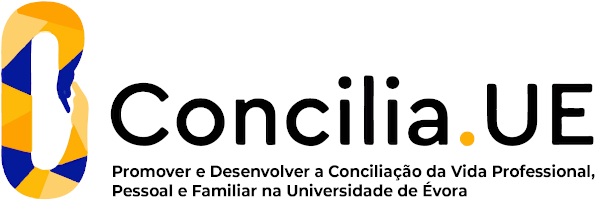2024
Andrology, Gynaecology and Obstetrics
Name: Andrology, Gynaecology and Obstetrics
Code: MVT15201I
6 ECTS
Duration: 15 weeks/156 hours
Scientific Area:
Veterinary Medicine
Teaching languages: Portuguese
Languages of tutoring support: Portuguese, English
Regime de Frequência: Presencial
Learning Goals
This course aims to provide the student with the necessary skills to diagnose, treat, and monitor the animal's recovery in the field of Reproductive Medicine applied to domestic species.
At the end of this course, the student should be able to:
- Adapt the clinical exam to a given clinical presentation
- Recognize the characteristic patterns of diseases of the reproductive tract in male and female of domestic species, as well as pregnancy and parturition diseases
- Critically analyze a clinical situation, distinguish between inferential differential diagnoses, and to select and interpret the complementary diagnosis tools supporting the diagnosis
- Select the therapeutic approaches available for a given situation, and discuss with the owner the most adequate considering the clinical context
- Issue a prognosis (life and fertility) and schedule follow-up appointments
- Evidence clinical reasoning and decision-making skills
At the end of this course, the student should be able to:
- Adapt the clinical exam to a given clinical presentation
- Recognize the characteristic patterns of diseases of the reproductive tract in male and female of domestic species, as well as pregnancy and parturition diseases
- Critically analyze a clinical situation, distinguish between inferential differential diagnoses, and to select and interpret the complementary diagnosis tools supporting the diagnosis
- Select the therapeutic approaches available for a given situation, and discuss with the owner the most adequate considering the clinical context
- Issue a prognosis (life and fertility) and schedule follow-up appointments
- Evidence clinical reasoning and decision-making skills
Contents
1. Anomalies of sexual differentiation
2. Andrology:
Diseases affecting the genital structures in the male of domestic species (congenital and acquired abnormalities of testicles and epididymis; adnexal genital glands; penis and prepuce) - Diagnosis and treatment
Breeding soundness examination in the male
3. Gynecology
Diseases originating in the female genital structures (congenital and acquired abnormalities of the ovaries and oviducts; uterus and cervix; vagina and vulva) - Diagnosis and treatment
Evaluation of the reproductive soundness in the female
4. Veterinary obstetrics
.... Pregnancy losses
.... Pregnancy Diseases
.... Obstetric clinical Exam
.... Dystocia and Obstetric interventions (obstetric manipulation, Cesarean section, and fetotomy)
.... Postpartum diseases
The addressed domestic species include horses, cattle and small ruminants, pigs, birds, rabbits, and carnivores (dog and cat).
2. Andrology:
Diseases affecting the genital structures in the male of domestic species (congenital and acquired abnormalities of testicles and epididymis; adnexal genital glands; penis and prepuce) - Diagnosis and treatment
Breeding soundness examination in the male
3. Gynecology
Diseases originating in the female genital structures (congenital and acquired abnormalities of the ovaries and oviducts; uterus and cervix; vagina and vulva) - Diagnosis and treatment
Evaluation of the reproductive soundness in the female
4. Veterinary obstetrics
.... Pregnancy losses
.... Pregnancy Diseases
.... Obstetric clinical Exam
.... Dystocia and Obstetric interventions (obstetric manipulation, Cesarean section, and fetotomy)
.... Postpartum diseases
The addressed domestic species include horses, cattle and small ruminants, pigs, birds, rabbits, and carnivores (dog and cat).
Teaching Methods
In the flipped classroom format, the theoretical classes (2h) are preceded by an independent study and involve the discussion of themes and real situations.
In practical classes (PL; 3h), students train the procedures associated with: conducting a consultation in this area in domestic species, the selection, and analysis of complementary exams that support diagnosis, the discussion of therapeutic approaches adjusted to the presented context, and the monitoring of the evolution of the clinical situation, accompanying the issuance of prognosis (of life and fertility).
Continuous assessment includes the completion of a written frequency (Freq), the assessment of procedural skills acquired (Comp), and the products of participation (Part)
Continuous assessment score = 40% Freq + 20% Part + 40% Comp
The final evaluation includes two consecutive tests: cognitive and decision-making skills (CC1) and procedural skills (Comp)
Final exam score = 50% CC1 + 50% Comp
In practical classes (PL; 3h), students train the procedures associated with: conducting a consultation in this area in domestic species, the selection, and analysis of complementary exams that support diagnosis, the discussion of therapeutic approaches adjusted to the presented context, and the monitoring of the evolution of the clinical situation, accompanying the issuance of prognosis (of life and fertility).
Continuous assessment includes the completion of a written frequency (Freq), the assessment of procedural skills acquired (Comp), and the products of participation (Part)
Continuous assessment score = 40% Freq + 20% Part + 40% Comp
The final evaluation includes two consecutive tests: cognitive and decision-making skills (CC1) and procedural skills (Comp)
Final exam score = 50% CC1 + 50% Comp





















